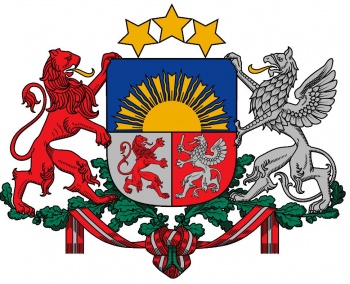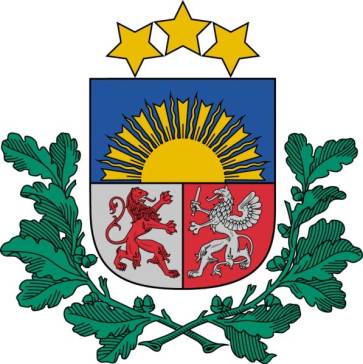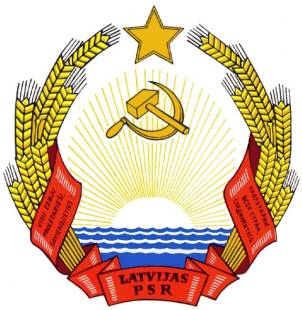National Arms of Latvia: Difference between revisions
Knorrepoes (talk | contribs) No edit summary |
(No difference)
|
Revision as of 12:01, 4 March 2018
NATIONAL ARMS OF LATVIA
Official blason
Dalīts un skaldīts; augšdaļā zilā laukā zelta saules puse, apakšdaļā sarkans lauva sudraba laukā un sudraba grifs sarkanā laukā. Sarkans lauva un sudraba grifs. Ozola lapu pinums un lente valsts karoga krāsās
Origin/meaning
The arms were officially adopted on June 15, 1921.
In 1918 the newly created Republic of Latvia confirmed its first coat of arms. It was the rising sun with letter "L" and three stars. The rising sun symbolized the birth of new nation, "L" meant Latvia and three stars symbolized three historical regions of Latvia: Kurzeme (with Zemgale and Selija), Vidzeme and Latgale.
In the 1921 version the sun and stars remained, but the stars were placed above the shield.The two quarters in base each represent a part of the country: Courland and Semigallia (Kurzeme and Zemgale) making Western Latvia, are symbolised by a red lion. Livonia and Lettgallia (Vidzeme and Latgale) making Eastern Latvia, are symbolized by a griffin. These symbols are repeated by the supporters.
The garland of oak symbolizes power and endurance and refers to the holy oak-tree of the ancient lettonians.
The arms can also be used in simpler versions:
| The middle arms |
The small arms |
For the Latvian Soviet Republic of 1940-1991 a soviet-style national emblem was adopted:
| The emblem from 1940-1991 |
Contact and Support
Partners:
Your logo here ?
Contact us
© since 1995, Heraldry of the World, Ralf Hartemink 
Index of the site













